Transmission Trouble: Report Claims Ford Knew Focus/Fiesta DSP6 Was Defective

Making a mistake while trying to remedy an earlier one is a routine part of the human condition. We’re imperfect creatures and sometimes the easiest solution after a string of foulups is to just sweep something under the rug and hope nobody ever bothers to look there — even though they probably will. Incredibly, this logic can spread to an entire organization and with roughly the same effectiveness.
Earlier this week, Ford issued a safety recall on select Focuses manufactured within the last decade (1.5 million were recalled previously). But not before becoming the subject of a scathing report from the Detroit Free Press claiming the automaker knew the cars had bunk transmissions and did everything in its power to keep that under wraps in order to continue selling them.
The report is brutal and includes supportive internal documents, court records, and corporate communications garnered through a lengthy investigation. The culprit of this drama is the Ford PowerShift (DPS6/Getrag 6DCT250) transmission found in third-gen Focuses (MY 2011-2018) and sixth-gen Fiestas (2011–2019). You might recall that both cars were subjected to class-action lawsuits from around the globe and routine complaints at home over their wonky, dual-clutch transmissions.
While Ford issued a few recalls on the vehicles, including the most-recent one, the transmission was never officially a part of them. The National Highway Traffic Safety Administration even looked into the matter in 2014, but Ford seemingly convincing it that the issue was the result of wear and tear — not a manufacturing defect. However customers were complaining about power losses, cars randomly shifting into neutral, and sudden acceleration immediately after both vehicles went on sale.
Apparently, Ford was fully aware of the problem and was even working in a clandestine manner to find a way to fix it. But the cars went — and remained — on sale, despite the company being advised against it by both engineers and its legal council.
From the Detroit Free Press:
The automaker pushed past company lawyers’ early safety questions and a veteran development engineer’s warning that the cars weren’t roadworthy, internal emails and documents show. Ford then declined, after the depth of the problem was obvious, to make an expensive change in the transmission technology.
Instead, the company kept trying to find a fix for the faulty transmission for five years while complaints and costs piled up. In the interim, Ford officials prepared talking points for dealers to tell customers that the cars operated normally when, in fact, internal documents are peppered with safety concerns and descriptions of the defects.
Some of the earliest stem from 2008, when Ford’s lawyers told engineers they were worried about the safety of dual-clutch technology, which had previously given Volkswagen some serious headaches. But the cars were being developed in the midst of the recession, discouraging Ford from making a costly, last-minute change. Instead, the automaker openly proclaimed the DPS6 as a breakthrough in performance and economy.
That same year, Ford quality supervisor Johann Kirchhoffer told the lawyers that a transmission slipping into neutral wasn’t a big deal in itself. “We have evidence that VW had a recall of a number of transmissions with a potential ‘Unintended Neutral’ occurring with low volumes,” he wrote in an e-mail. “We are pursuing any effort to reduce the occurrence of an ‘Unintended Neutral’ event to a so-called ‘Broadly Acceptable level.'”
The back and forth continued, bringing in more voices, but the Fiesta went on sale with the transmission anyway. At the time, it was unclear what had been done to remedy the issue. However, the matter came around again when the it came time to install the transmission into the Focus.
In 2010, product development engineer Tom Langeland told supervisors that something was desperately wrong with the car. He criticized the vehicle for having a “nasty launch judder” and too much vibration. “We also cannot achieve a driveable calibration that will get us to production,” he said. “The clutch torque delivery MUST BE IMPROVED.”
One month before the Focus was to be shipped to dealers, Craig Renneker, then acting director of transmission and driveline engineering, e-mailed Richard Bonifas, a customer service manager at Ford’s Michigan Assembly Plant in Wayne. “The 2012 Focus vehicles equipped with the DPS6 transmission may experience a shudder/shake on start up or when slowing to a stop … ship the vehicles to the dealers with the level of shudder we currently have and continue our efforts towards a permanent resolution ASAP,” Renneker wrote in February of 2011. “That’s just my opinion and it’s not a popular one.”
Problems turned out to be even more prevalent on the Focus than they were with the Fiesta, sending customers back to the dealership in large volumes. Fed up with no solution from the factory, it wasn’t long until service centers started expressing their frustrations as well.
“I’m tired of looking like the bad guy for repairing all these DPS6 transmissions, when truthfully Ford’s the bad guy here,” read a 2013 e-mail from a Jacksonville, Florida, dealership. “Let’s be honest. Ford produces a horrible product and we trans guys get the wrath of it. My warranty clerk thinks I’m insane and it’s like pulling teeth to get paid for all the work we have to do on these things. The input shaft seals are only good for about 10K miles at best. And by replacing them as well as the clutch, the car’s only going to return again and again and again. I do 4 or 5 a week on average … I would love to know how Ford intends to fix this.”
Those are just the juiciest bits. The full report outlines many more examples of internal conflict at Ford surrounding the gearbox and we strongly urge you to read them. They include examples how the automaker tried to cope with the financial headaches associated with the DPS6, testing protocols, warranty extensions, legal actions taken, some regulatory oversight, and lots of infighting.
Ford’s official response to the story has been that it handled the matter responsibly and ultimately ensured a good product was brought to market — maintaining that DSP6-equipped cars are safe. It also released a statement to the Free Press regarding the investigation on Wednesday:
In 2011 and 2012, Ford was excited and proud to introduce an innovative, all-new transmission that delivered higher fuel efficiency and had a smaller environmental footprint. Development of the transmission presented challenges common to innovative new technology. Those challenges were raised in normal exchanges inside Ford and with Getrag, the maker of the transmission.
Based on rigorous testing during development, we were confident in the transmission and our ability to address any quality issues that might arise with the new technology. Some consumers, accustomed to traditional automatic transmissions, found the shifting pattern of the new, fuel-efficient automatic transmission unusual and raised questions with their dealers. By design, the new transmission, also an automatic, shifted more like a manual transmission. In places where manual transmissions were still more common, related consumer inquiries were much lower.
After the new transmission was on the road, other problems developed. We acted quickly and determinedly to investigate the problems, alert dealers, recommend and pay for repairs, and extend warranties. While we eventually resolved the quality issues, the solutions were more complex and took longer than we expected. We regret the inconvenience and frustration that caused some consumers.
Along the way, we identified and discussed a range of possible remedies, including switching to an entirely different transmission. We believed the decisions we made at different points to correct the problems were best for consumers. While we have addressed quality problems with the transmission, vehicles in which it was installed were and remain safe.
[Image: Ford Motor Co.]

A staunch consumer advocate tracking industry trends and regulation. Before joining TTAC, Matt spent a decade working for marketing and research firms based in NYC. Clients included several of the world’s largest automakers, global tire brands, and aftermarket part suppliers. Dissatisfied with the corporate world and resentful of having to wear suits everyday, he pivoted to writing about cars. Since then, that man has become an ardent supporter of the right-to-repair movement, been interviewed on the auto industry by national radio broadcasts, driven more rental cars than anyone ever should, participated in amateur rallying events, and received the requisite minimum training as sanctioned by the SCCA. Handy with a wrench, Matt grew up surrounded by Detroit auto workers and managed to get a pizza delivery job before he was legally eligible. He later found himself driving box trucks through Manhattan, guaranteeing future sympathy for actual truckers. He continues to conduct research pertaining to the automotive sector as an independent contractor and has since moved back to his native Michigan, closer to where the cars are born. A contrarian, Matt claims to prefer understeer — stating that front and all-wheel drive vehicles cater best to his driving style.
More by Matt Posky
Latest Car Reviews
Read moreLatest Product Reviews
Read moreRecent Comments
- Calrson Fan We are already seeing multiple manufacturers steering away from EVs to Hybrids & PHEVs. Suspect the market will follow. Battery tech isn't anywhere close to where it needs to be for EV's to replace ICE's. Neither is the electrical grid or charging infrastructure. PHEV's still have the drawback that if you can't charge at home your not a potential customer. I've heard stories of people with Volts that never charge them but that's a unique kind of stupidity. If you can't or don't want to charge your PHEV then just get a hybrid.
- AZFelix The last time I missed the Malibu was when one swerved into my lane and I had to brake hard to avoid a collision. 1 out of 5⭐️. Do not recommend.
- 2ACL I won't miss it; it was decent at launch, but in addition to the bad packaging, GM did little to keep it relevant in the segment. I'd prefer that another domestic automaker doesn't just give up on the mainstream sedan, but unlike some of Ford's swan songs, the Malibu made an indifferent case for why they should live.
- ToolGuy TG grows weary of purchasing gasoline. I don't care so much how or why, I am just tired of it. I still buy petroleum products, not 'boycotting oil,' but backing away from gasoline where I can. Sample size = 1.
- Probert Maybe it's not too late for the Dodge Neon I've always dreamed of!!! To the keyboard Robin!

















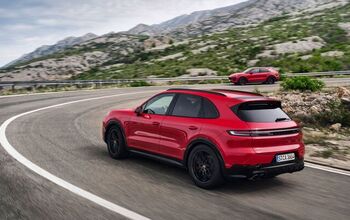

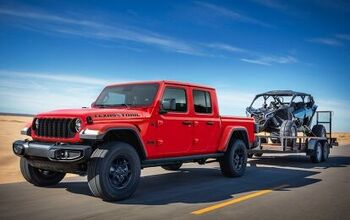
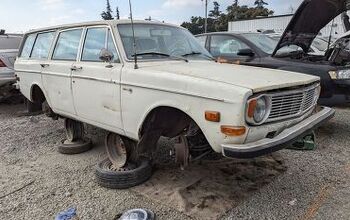
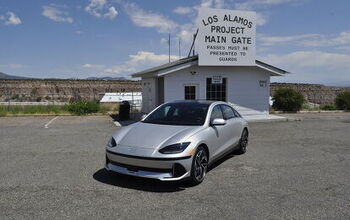





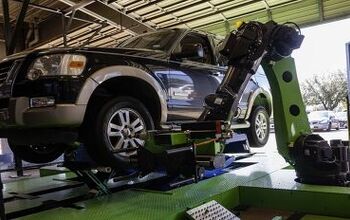
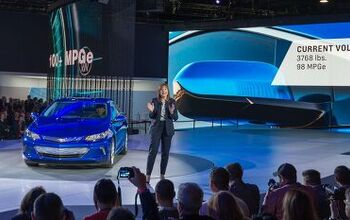


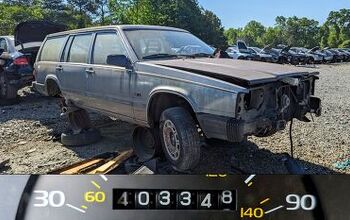


Comments
Join the conversation
I doubt there are many people who suffered as much from these as I did. I bought two Powershud-d-d-er cars new, a Focus and also a Fiesta. I dealt with all the Powershud-d-d-er tragedy that has been so well described and widely documented, 2x. Why on earth did I buy them? They were both--to me--very handsome cars that still look good today. The Focus especially had a reputation as a handler which I found to be true. I rented a Mazda 3, the gold standard, for a few days and didn't think it had anything on the Focus. Nothing else went wrong with either car, save an A/C solenoid on Fiesta which was replaced free. Dick Dyer Ford in Columbia, SC was very good through it all. Both cars, save the transmission, would have been to me home runs. I would even buy a Ford again, after a model had been in production four years. I grew up in muscle cars and those brands are dear to me. I was sad when Pontiac and Oldsmobile went out of business. I had a GTO. But I can never buy a Ford again---as long as my wife is living. Powershud-d-d-er is a Sophoclean automotive tragedy. Has anything been worse? Cadillac V8/6/4? Edsel? So sad.
Fiat got similar complaints with the dry dual-clutch auto in the 500L. So they stopped using it. The conventional six-speed auto that replaced it might have been a tad less sporty and gotten a tad worse MPG, but no longer was normal stop-and-go driving accompanied by the smell of clutch packs burning. Mazda saw both the advantages and disadvantages of both types of automatics, and came up with a brilliant solution: a transmission that starts off like a conventional automatic, then operates like a dual-clutch once rolling. Smooth reliable starts, fast sporty shifts, great MPG. It might be too much to expect Ford to behave like Mazda, where engineering excellence matters. But is it too much to expect them to behave like Fiat, where avoidable errors should be avoided?